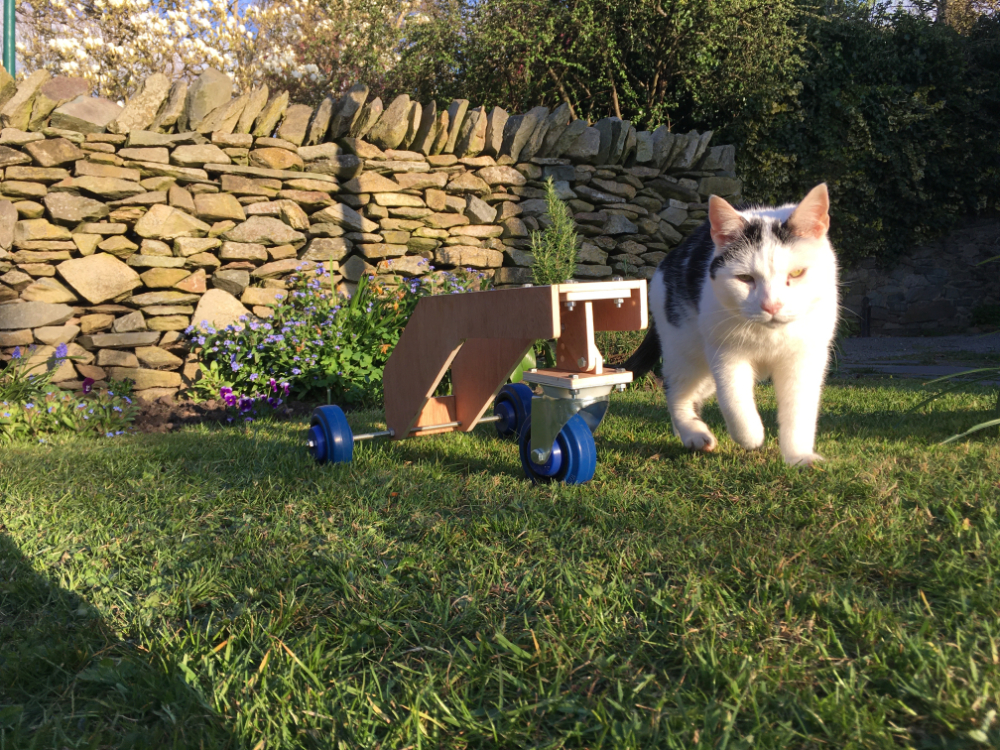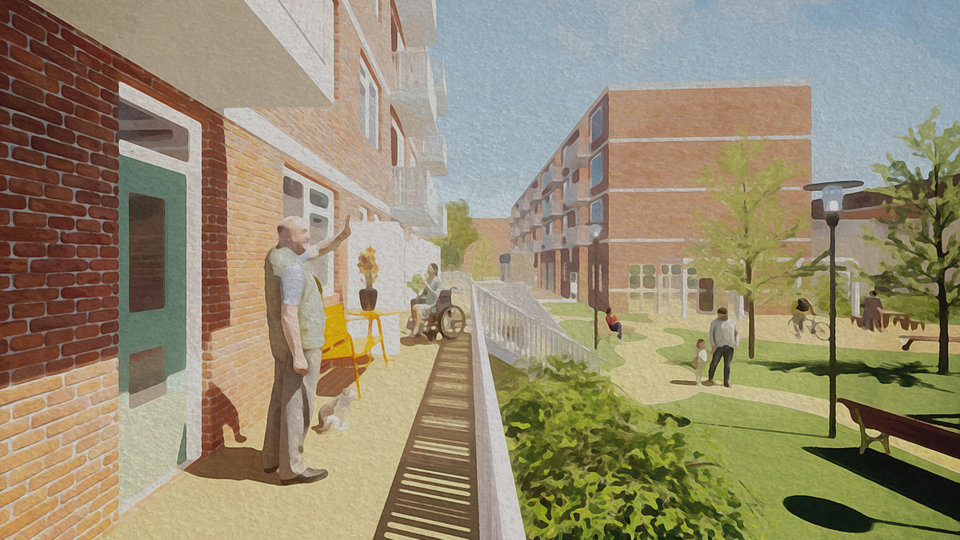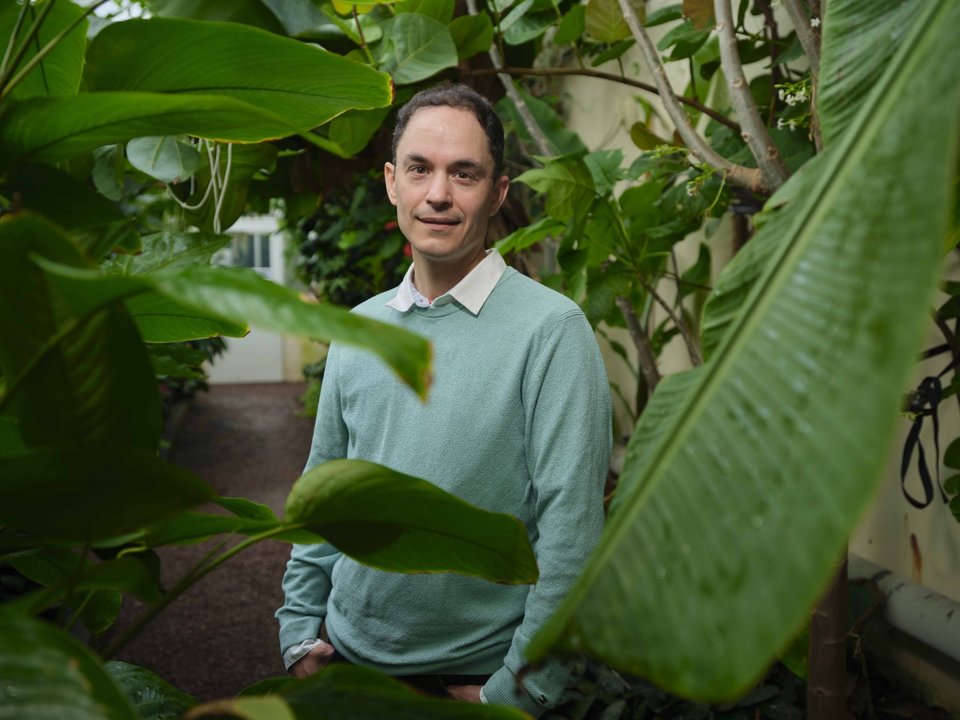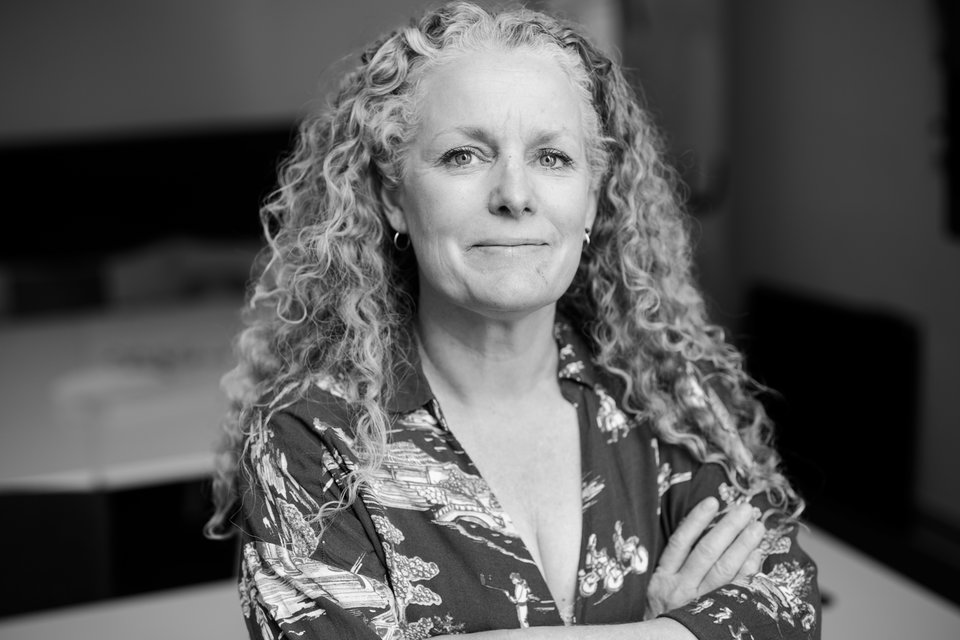Conventionally, when pushing a wheelchair you stand directly behind the person in the chair. Not only does this make seeing and hearing each other difficult, it also feels unnatural – why can’t you stroll side-by-side like two able-bodied people would? Can a technical solution solve this very human challenge?
As a physiotherapist in paediatric rehabilitation at Rijndam Rehabilitation Centre, Nicole van den Dries-Luitwieler knows a lot about pushing people in wheelchairs. As a mother of a fully care-dependent child, she is also an expert by experience. ‘My daughter enjoys it immensely when I take her for a walk, but she communicates non-verbally, by crying out and through bodily expression. So to communicate with her, you have to stand still and look,’ she says. Maintaining contact while walking not only enhances the experience, but it’s often absolutely crucial with this target group. ‘These children all have different problems, so you have to observe them – then you can intervene in a timely manner if, for example, a child develops choking symptoms due to reflux, or if, on the contrary, an epileptic seizure is triggered by the light outside. It’s very complex.’
‘Walking side-by-side is the natural thing to do,’ says van den Dries-Luitwieler, an idea which could revolutionise wheelchairs for many different user groups – from children with multiple disabilities to elderly with dementia.
Ziggy – a namesake
This case-based project was taken forwards by Heike Valley, professor of Human Motor Augmentation at TU Delft and honorary professor of Innovative Rehabilitation Technology at Erasmus MC. She explains that, ‘if you simply attached a bar to the side of a wheelchair, then it would go around in circles when you push it. Moment = force x distance. That’s the physics principle.’
Together with Lucy Bennett, mechanical engineer, and Bram Sterke, PhD candidate, the three found an incredibly elegant solution involving a simple pushing handle and a modified castor wheel. Their solution, fondly named after Bennett’s 17-year-old cat, Ziggy. It utilises a tilted angle to steer the wheelchair and at the time of writing the patent is pending. They used this idea, which is similar to leaning a bike over to make a turn, to demonstrate how any wheelchair could be pushed from the side as easily and effectively as from behind.
Tour of the Netherlands
With funding from the Rijndam Rehabilitation Centre and Erasmus MC, Bennett is now leading the project into its next phase: reaching users. ‘It’s important to place the user at the heart of any technical solution. If you don’t, your design will be detached from the person it’s supposed to help – usually to the detriment of the product.’ Bennett ensures her designs stay in touch with their users by keeping them involved in every step of the design process. ‘We’re currently preparing the next Ziggy prototype ready for a “Tour of the Netherlands” of different care homes, day-care centres and other user groups. We’re always looking for different perspectives, and this tour helps us to do just that.’
Steering towards a start-up
With the strong backing of its user group, Ziggy is well on its way to become a product that’s commercially available. As part of final developments, a group of TU Delft honours students – Job Sesink, Anne-Wil van Werkhoven, Mark Noordermeer, Shane van Rhijn, Tim van Baast and Evy Ligtvoet – have been contributing to the project. ‘They have brought a diversity of innovative and elegant designs, numerous prototypes and a lot of enthusiasm to the project’, says Bennett. ‘We’re very impressed with their ability to both interact with the user and produce technically sound engineering designs – it’s a winning combination.’ Following the final technical developments, Bennett has plans to establish Ziggy as a social enterprise in 2022.
The TU Delft students of BioMechanical Engineering show the provisional prototype to Nicole van den Dries-Luitwieler and her daughter Yrsa. During their visit, they meet Yrsa and ask both mother and daughter for their opinion and input for the development of the prototype.
Students: Job Sesink (left) Mark Noordermeer (right) and Anne-Wil van Werkhove
Textbook example of convergence
Heike Vallery thinks the project is a textbook example of how things should go in convergence, the collaboration between Erasmus University, Erasmus MC and TU Delft. ‘A user – or a therapist or family member – comes to us with a question that we would never have thought of ourselves. Then we, as an interdisciplinary group of engineers and therapists, start to examine the problem and call in students or PhD candidates,’ she says. ‘Ideally, people should bring us many more of these kinds of individual cases. In the current partnership, we’re already in daily contact with colleagues from the clinic, but there are a lot of interesting questions in the minds of people who aren’t familiar with the research.’
TU Delft and Erasmus MC are now working to systematically enable the design and manufacture of small-scale solutions. ‘The establishment of intellectual property between the two institutions is already going smoothly, but there's still a lot more to sort out. Then you're talking about design processes and workshops, but also regulations.’ For example, since May 2021, all medical devices that enter the market in Europe must meet the strict requirements of the European Medical Devices Regulation. ‘So you have to properly define who the manufacturer is and who is liable.’
Van den Dries recognises those issues, as a therapist and parent, but also as a PhD student at the Hanze University of Applied Sciences, where she conducts research on the family quality of families with multiply-impaired children. ‘These families bring many opportunities to develop innovative products, but there are so many things to look out for when you try to bring something to the market That’s one of the main focuses in our research now.’ Within the convergence, hopefully many more of such innovations will soon be within reach.
This case-based project in which Heike Vallery, Lucy Bennet and Bram Sterke collaborate with Erasmus MC and Rijndam Rehabilitation is part of the scientific program Medical Delta: Improving Mobility with Technology.

















